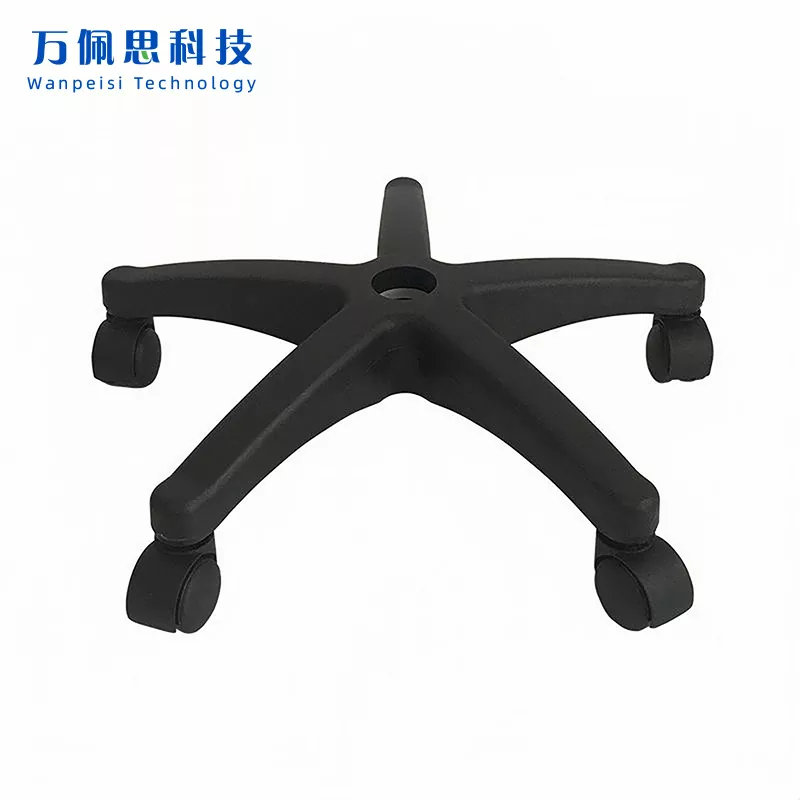Are Plastic Office Chair Bases Eco-Friendly?
2024-10-22

Are Plastic Office Chair Bases Eco-Friendly?
Environmental concerns have become increasingly important in recent years, given the rise in pollution levels around the world. One of the areas that have attracted attention is plastic waste management. The use of plastics in office chair bases has been a concern among eco-warriors. Plastic office chair bases are made from petrochemicals, which are non-renewable, and the manufacturing process consumes a lot of energy, increasing carbon emissions. Once these chairs have lived their lives, they end up in landfills. The plastic in these chairs takes hundreds of years to decompose, leading to pollution.Can Plastic Office Chair Bases Be Recycled?
Yes, plastic office chair bases can be recycled. However, the recycling process is complicated, and recycling facilities may not process the plastic material used in office chair bases. Most recycling facilities accept high-density polyethylene, a common plastic used in milk jugs. The plastic in office chair bases is also recyclable, but the problem lies in separating the plastic from the other chair parts. The process is expensive and time-consuming, making it uneconomical to recycle.What Are the Alternatives to Plastic Office Chair Bases?
The need for eco-friendly office chair bases has led to an increase in alternatives. Wood and metal office chair bases are a popular alternative to plastic. They are durable, sturdier, and customizable, but they are more expensive than plastic office chair bases. However, they are heavier and may require an expert to assemble.Conclusion
In conclusion, plastic office chair bases are an affordable, durable, and customizable alternative to metallic or wooden office chair bases. However, plastic office chair bases are not eco-friendly alternatives to wood or metal office chair bases. They do contribute to plastic waste, which pollutes the environment. While these office chair bases can be recycled, the expense involved in recycling makes the process uneconomical. It is high time we embrace eco-friendly alternatives to plastic office chair bases.Xiamen Wanpeisi Technology Co.,Ltd. is a leading office chair base manufacturer based in China. Our goal is to produce durable and affordable office chair bases while adhering to eco-friendly manufacturing operations. Our products are made from high-quality materials and adhere to global quality standards. To buy our products or make inquiries, please visit our websitehttps://www.wpsplastics.com. If you have any questions, please send an email to jessica@wpsplastics.com.
Scientific Research Papers
1. Ghorbanpour Arani, A., Azin, F. M., & Mosavi Nashemi, M. S. (2021). Green sustainable matrix-free composite materials containing waste streams: A review. Journal of polymer research, 28(5), 117.
2. Li, T., Wang, Y., Liu, Y., Zou, Y., Shen, H., Wu, L., & Li, Y. (2020). Degradation of microplastics in soils. Chemosphere, 251, 126308.
3. Zhang, J., Li, L., Zhou, Y., Yu, R., Xie, Y., Li, C., & Wang, X. (2021). Effect of process parameters on pyrolysis of waste expanded polystyrene foam. Thermochimica Acta, 694, 178884.
4. Li, H., Ma, J., & Li, C. (2019). Encapsulated W /Fe nanoparticles in polystyrene microspheres for synergistic decontamination of 1, 3, 5-trinitro-1, 3, 5-triazacyclohexane and As (V). Journal of hazardous materials, 365, 121-132.
5. Wu, W., Cao, J., & Liu, R. (2019). Encapsulation Effect of Microencapsulated Phase Change Material with a Biopolymeric Shell for Thermal Regulation. ACS omega, 4(7), 12019-12026.
6. Mbaazu, A. E., Loo, M. Y., Lau, W. J., Poh, P. E., & Ismail, A. F. (2020). Advances in Membrane Science and Technology for CO 2 Capture: A Review. Membranes, 10(10), 278.
7. Qian, X., Gu, J., Zhang, P., Zhai, Y., Wang, Y., & Li, T. (2021). Synergistic Enhancement of Flame-RetARDant Performance of pp/IFR Composites by Incorporating Predisperse graphene oxide as a nanofiller. Polymers, 13(4), 532.
8. Zhang, C., Zhang, A., Jiang, Y., Wu, H., Zhang, B., & Chen, X. (2021). Modified lignocellulose-based adsorbents for the removal of heavy metal ions: A Review. BioResources, 16(2), 3877-3902.
9. Shoaib, M., Mohapatra, S. K., & Dash, R. R. (2021). An Overview of Lignocellulosic Waste-based Bio-sorbents as Low-cost Adsorbents for the Removal of Heavy Metals from Wastewaters. Arabian Journal for Science and Engineering, 46(2), 1489-1512.
10. Amiri Rad, A., Rashidi, A., & Bagherzadeh, R. (2019). Application of Iron and Its Nanoparticles for Efficient Removal of Fluoride from Aqueous Solutions: A Critical Review. Journal of environmental management, 249, 109321.


